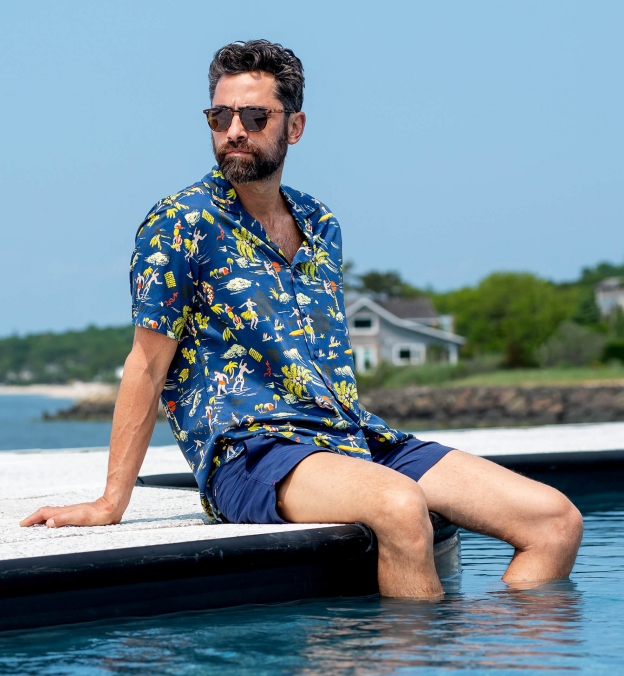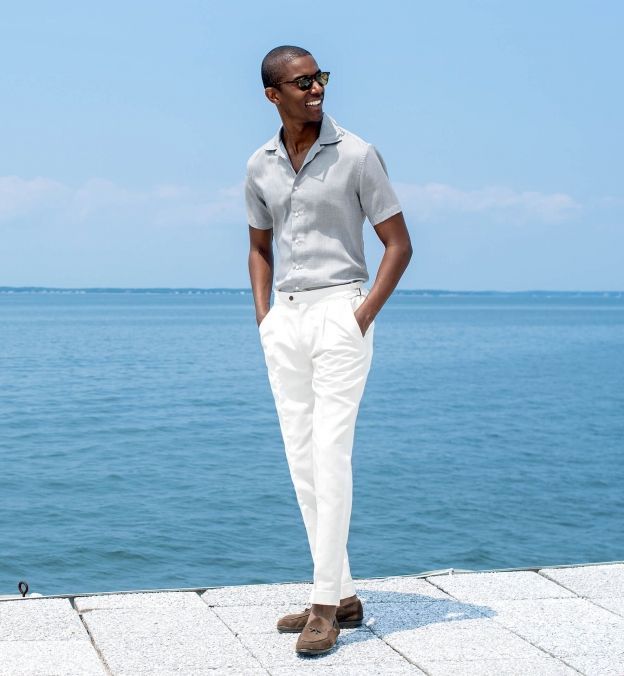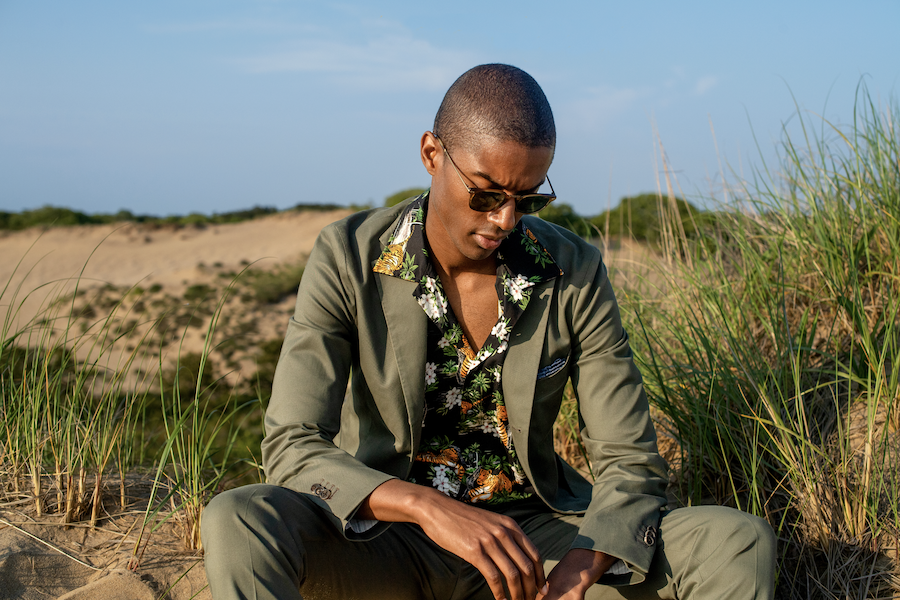The origins of the Aloha shirt can be traced back to 1920s and early 1930s Hawaii. It was inspired by and first made out of Japanese work kimono fabrics, and took the name “Aloha” from the propensity of the 1930s public to add that tag to anything that originated in Hawaii. The Aloha shirt gained popularity during the Great Depression, as it represented the idyllic, carefree, untroubled life people longed to be living at the time. Since then, the Aloha shirt has evolved as a warm-weather fashion statement, and to this day evokes the same cool, laidback look we still aim to capture.

A colorful Aloha shirt with a traditional print.
How to Design Your Aloha Shirt
Choosing a Fabric
Today’s Aloha shirts are generally made from rayon, a cellulose fiber similar to Lyocell, Tencel, and bamboo, but you can recreate the Aloha shirt look with just about any casual summer fabric and the right design details. Cotton and linen blends, pure linen, and seersucker are fair game, but avoid classic dress shirt fabrics like cotton twills and royal oxfords, as these will result in a more formal look.
Fun prints and bright colors are a major defining feature of traditional Aloha shirts. They often depict tropical scenes and ocean imagery, including anything from flowers and surfers to cocktails and tigers. You can, however, try solids or stripes if you want to go a more subdued route. The right design details will help give a less vibrant fabric an “Aloha” sensibility.
Aloha Shirt Design Details
Camp Collar. The Camp Collar is the quintessential casual collar, often seen on short sleeve summer shirts. It’s completely unfused and has no collar band which gives it a relaxed lack of structure. In our Design-a-Shirt tool, selecting the Camp Collar automatically adds a plain “no placket” front to the shirt to maintain a consistently casual shirt design.
Short Sleeves. Short sleeves are the only way to go for the classic Aloha shirt look.
Pocket. A single left chest pocket is the most classic Aloha shirt style. It’s also a great place to put those sunglasses, cigars, and drink tickets.
Straight Hem. You’ll want to opt for a straight hem if you plan on wearing your shirt untucked (which we recommend). You can read more about our hem options here.
Coconut Buttons. Choose coconut buttons for the most authentic look, but feel free to have fun with other options, too. Match a fabric with a blue ground with our Slate Horn buttons, or go luxe with Australian Mother of Pearl.

A relaxed-fit Aloha shirt, tucked into trousers.
Achieving the Relaxed Fit
The Aloha shirt represents a laidback sensibility, and fit is an integral part of that. The midsection of the shirt should not be much smaller than the chest width, so as to avoid the more formal “hourglass” silhouette typical of business shirts. For example, if your shirt’s chest width measures 20″, a midsection width of no less than 18.5″ would work nicely. We also recommend looser sleeves, as fitted ones won’t offer an easygoing look. Overall, keep the fit loose and comfortable to give your Aloha shirt the relaxed, on-a-beach-somewhere vibe it’s best known for. For more guidance on creating a short sleeve shirt size, click here.

An Aloha shirt styled with a casual suit.
How to Wear the Aloha Shirt
How many buttons should be left unbuttoned? To keep with the casual, laidback look, we recommend wearing 1-2 buttons open below the collar. How low you go is primarily personal preference, and depends on how relaxed you want to look. Generally, the collar button and loop on the Camp Collar is simply for show and should never be buttoned.
Tucked or untucked? The Aloha shirt is most commonly worn untucked, especially with shorts, casual pants, or a swimsuit. It pairs well with linen and vintage denim in particular. You can certainly wear your Aloha shirt tucked in—preferably with linen or cotton trousers or unstructured suiting—for a smarter summer look.
- The Camp Shirt: History & Fit The Camp shirt is an easy casual piece that’s made a comeback in recent years. It calls to mind the carefree style of icons like Ernest Hemingway and...
- Dress Shirt Fabrics Overview Here we provide the definitive overview of the different types of fabrics commonly used in dress shirts. By understanding what the different weaves mean for a fabric you...
- Proper Cloth Shirt Care Instructions At Proper Cloth, we offer a wide range of shirt styles, and depending on the type of fabric used for the shirt, the care instructions will be different....
- How to Achieve the Perfect Polo Shirt Fit The Polo Shirt Fit: Relaxed and Not Too Slim Since polo shirts will fit differently from your typical dress shirts, we recommend you adjust your usual shirt size...